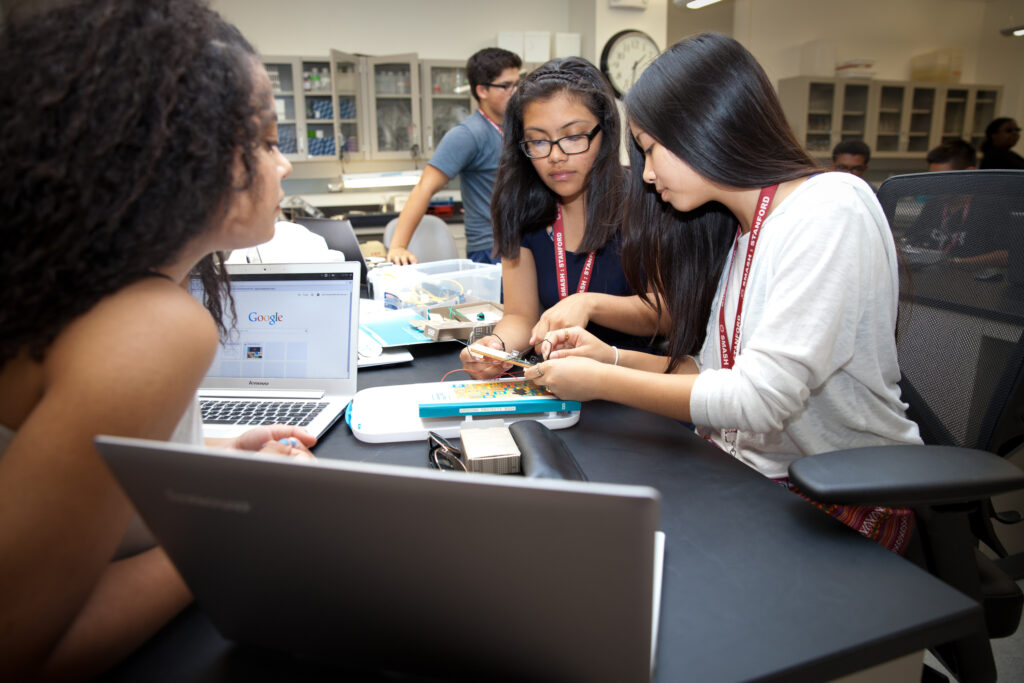Storytelling

Bloom's Level
Use
Setting
Activity
Technology
Related Strategies
Description
Storytelling is an instructional strategy that promotes student engagement and helps students make sense of the world around them. Telling stories is a natural way that people engage in communication and learn. Storytelling introduces concrete experiences that help students to make connections with and retain what they are learning. It can be applied across all subject areas, and stories can be generated by both students and teachers in all stages of the learning process. Storytelling can be implemented in a variety of modalities and contexts.
When To Use It
As a learning strategy, use storytelling when you want students to:
- connect, share different perspectives, and build class community
- see real-world applications of the concepts and skills they are learning
- generate ideas in preparation for writing
- make personal connections to concepts and ideas
- see the value in what they are learning
As an instructional strategy, use storytelling when you want to:
- use multimedia such as videos, podcasts, or pictures to illustrate a concept
- stimulate meaningful discussion that connects concepts to real life
learn information about your students to inform instruction - build trust and a sense of connection with students by sharing personal vulnerabilities and experiences
- make abstract or complex concepts relatable to students’ lives
- introduce concepts and make lectures more engaging and meaningful
How To Use It
Advance Prep
There are many ways to use storytelling in the classroom. Consider the following when you are planning to use storytelling as a teaching or learning strategy:
- How will storytelling support the learning objectives?
- What knowledge and skills do you want students to understand or apply as a result of listening to a story(s) or sharing stories? Note that stories do not need to be fully fleshed out and full of details. Brief accounts, anecdotes, examples, and relatable explanations can be as effective as elaborate stories with characters, setting, plot, conflict, and resolution
- How will stories be delivered (through oral communication, video, illustrations, audio, print, etc.)?
- At what point in the lesson or unit of study will stories be most impactful?
Implementation
- Present a compelling story to students. Often stories are used to introduce a topic, but you can integrate them at any point in a lesson or unit where they would be most impactful.
- During or after the story, check for understanding or facilitate discussion to help students make the intended connections.
- Storytelling does not have to be structured or planned. Allow opportunities for students to share stories during open discussions or at any appropriate time during the learning process. If you have designed a structured storytelling experience, model the art of storytelling and provide clear guidance and expectations for students when sharing and listening.
Pros
- Promotes understanding and retention
- Supports reading development
Helps to engage unmotivated learners and brings learning to life - Fosters empathy and helps students and teachers relate to one another
- Stimulates creative and critical thinking when students create their own stories
- Improves listening and communication skills
- Promotes community and belonging
Cons
- Creating compelling stories takes deliberate practice and skill.
- Creating stories can be time-consuming for teachers and students.
- Some teachers and students may feel intimidated by the process of creating or sharing stories with others
Culturally Responsive Application
Storytelling aligns with culturally responsive teaching in several ways. The nature of storytelling follows the oral tradition common to all human beings. When students listen to stories, they are exposed to multiple perspectives, which can expand their thinking and foster empathy for others. Allowing students to share their own stories creates a sense of belonging and inclusiveness. Sharing stories can be culturally affirming, especially when teachers or students deliberately share stories that are culturally relevant and relatable to their lives. When storytelling is culturally relevant, it helps students make personal connections with the content, thereby increasing understanding and retention.
Emerging English Language Support
Creates meaningful contexts. -cheap and no expensive equipment is required. Oral activity that is designed not only to be listened to but also be involved in. Stories should be familiar to the teachers and they should enjoy it and find no difficulties reading it.
Students with Disabilities Support
There is a close relationship between telling, as narration, and performing, as dramatisation.
Subjects
All
Why It Works
Storytelling help learners to engage more with programming (REF76).
- ABOUT US
- AREAS OF FOCUS
- Equity in CS EducationAdvancing access and equity in K-12 computer science education
- Inclusive Pathways to TechSupporting inclusive and alternative pathways to tech jobs
- Diversifying Entrepreneurship & VCInvesting in gap-closing companies and funds
- Equitable Tech PolicyAdvancing policy, regulation, and accountability to drive systemic change
- PUBLICATIONS
- RESPONSIBLE AI
- RESOURCES